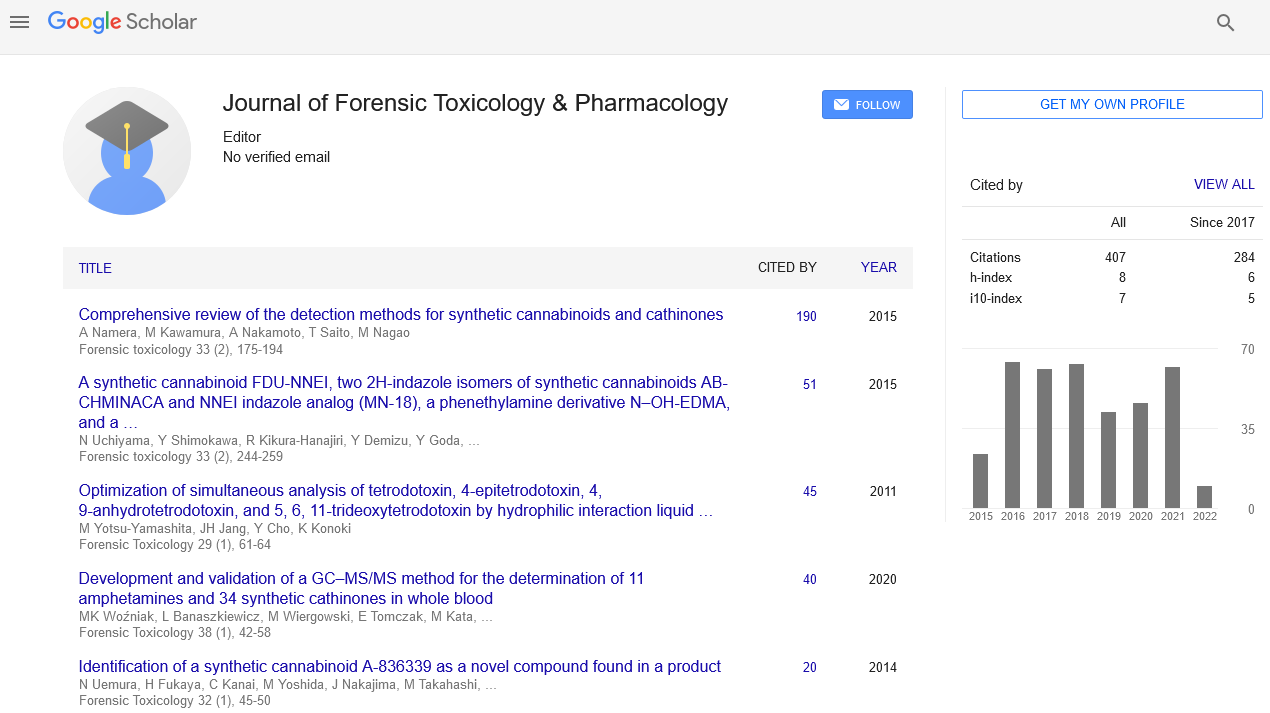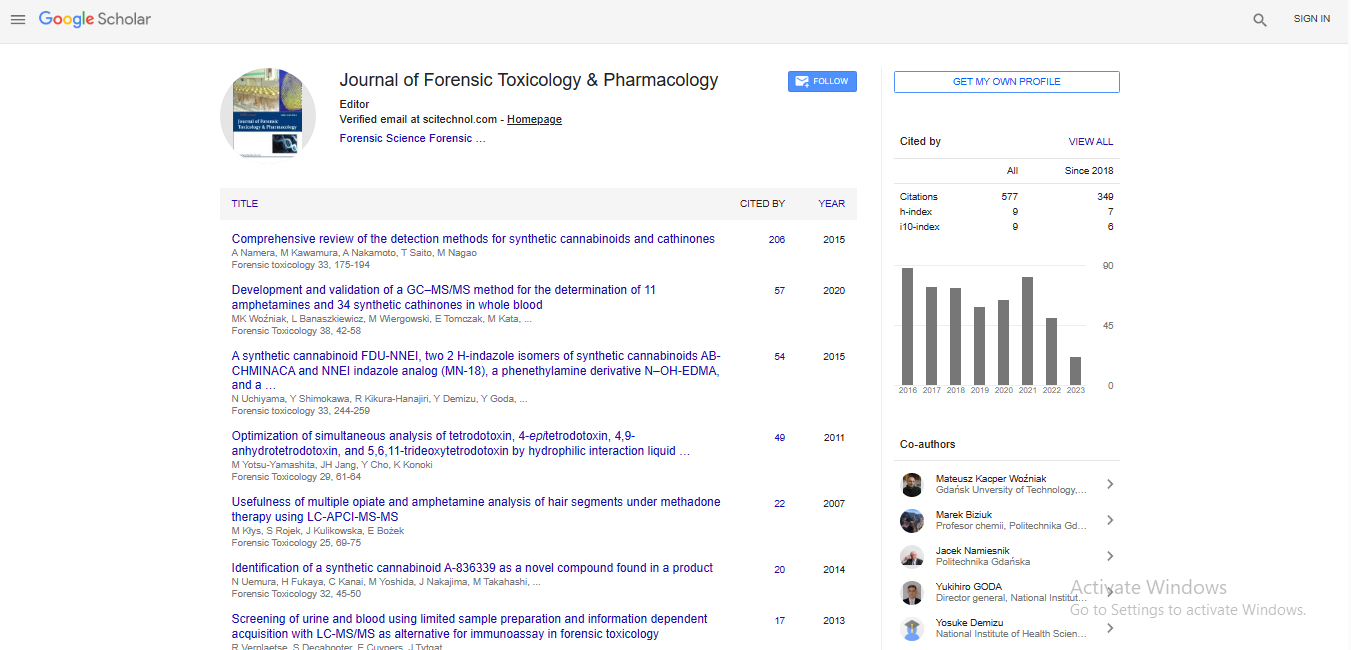Comparative protective potentials of vitamins C and E against nitrocellulose thinner-induced atherogenicity in male and female albino Wistar rats
Friday EUboh, Saviour Ufot and Uduak O Luke
University of Calabar, Nigeri
: Forensic Toxicol Pharmacol 2015, 4:3
Abstract
T his study assessed the comparative protective potential of vitamins C (Vit C) and E against nitrocellulose thinner-induced atherogenicity in male and female albino Wistar rats. Forty eight rats (24 males and 24 females), weighing 180–200 g, were used in the study. The animals were distributed into four groups, with six rats respectively for each of the male and female groups. The animals were orally exposed to 30 mg/kg bwt of nitrocellulose thinner (NCT) and respectively treated with Vit C (200.0 mg/kg bwt) and E (100.0IU/kg bwt) daily for 30 days. At end of the experimental treatments, the animals were sacrificed and plasma collected for atherogenicity analyses. The atherogenicity was determined from the plasma total cholesterol, triacylglycerol, low density lipoprotein, high density lipoproteins, and atherogenic indices of the plasma. The atherogenic indices were derived from the plasma lipid ratios, including TC: HDL, TG: HDL, (TC–HDL)/HDL and Log (TC/HDL). The results showed that the levels of plasma TC, TG, LDL, and the atherogenic indices recorded for male and female rats exposed to NCT were significantly (p<0.05)higher, while HDL levels were significantly (p<0.05) lower, compared respectively to the levels recorded for rats in the respective control groups. Also, the increase in TC, TG, (TC–HDL)/HDL and Log (TC/HDL) and decrease in HDL levels reported for rats exposed to NCT were observed to be sex-dependent, with females being more vulnerable. These results also showed that concomitant treatment of the respective groups of rats exposed to NCT with vitamins C and E significantly (p<0.05) protected both the male and female rats against NCT-induced in atherogenicity. However, the protection potential of vitamin E was observed to be significantly (p<0.05) higher than that of vitamin C. The results of this study therefore indicated that oral exposure to NCT may cause a higher risk of atherogenic disorders in females than males; and that vitamin E is more potent than vitamin C in protecting the exposed animals against NCT-induced atherogenicity in male and female rats.
Biography
Friday EUboh completed his PhD from University of Calabar, Calabar, Nigeria, and is presently an Associate Professor of Biochemistry, with Toxicology as his area of research interest. He served as the acting Head of Biochemistry Department in the Department of Biochemistry University of Calabar, Calabar, Nigeria, from 2011 to 2013. He is a member of Nigerian Society of Biochemistry and Molecular Biology, and Institute of Public Analysts of Nigeria. He has more than 60 papers published in reputable Journals, and is a reviewer and Editorial Board Member of many Journals of repute. He has also presented many conference papers, locally and internationally.
 Spanish
Spanish  Chinese
Chinese  Russian
Russian  German
German  French
French  Japanese
Japanese  Portuguese
Portuguese  Hindi
Hindi 
